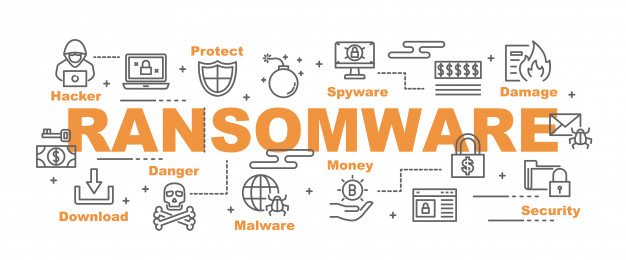
In the past couple of years, experts estimate that one hacking attempt has been made every 39 seconds. Most of these attempts aim at destabilizing businesses and stealing important data. In 2018, the world was rocked with rather infamous ransomware called ‘Wanna Cry’. The estimated losses from exposure to this ransomware cost individuals and businesses billions of dollars.
It is no surprise then that security and safety continue to be one of the top-ranking factors for Google and other search engines in 2019. The growth of smart technology, connected world systems, and the Internet of Things (IoT) has made it easy to track, steal, and escape after data violations.
The effects and aftermath of a ransomware attack can be potentially devastating to businesses and individuals alike. Ransomware holds a computer hostage, preventing use. In recent years, ransomware has become increasingly complex and often, increasingly costly to reverse.
Here are five things to know about ransomware:
1. There Are Two types of Ransomware:

The first type of ransomware is known as “blockers” because it essentially locks down a computer or device, preventing it from being used. Files stored on the blocked device are not affected, but they cannot be accessed because of the lock placed by the ransomware. This type of ransomware is better for the victim. Because the files are not altered, the user is more likely to be able to regain access to the device.
This type of hacking aims to place a lock on activities or prevents business competitors from innovating and launching a product. I have often seen this being used in the startup industry where the first-mover advantage translates into millions and billions of dollars.
The second type of ransomware is known as “cryptors.” These encrypt the files on the affected device, requiring a key to decrypt the files and restore their usability. The key is typically only provided once the ransom is paid. This is a worst-case scenario for the user because the files on the computer are compromised.
Even if the ransom is paid, there is really no guarantee that the files will be restored. This is where most hackers make their money and establish their notoriety. They handicap financial and government institutions and do not even live up to their promise once the ransom is paid.
2. Ransomware Affects All Types of Devices:
It is a common misconception that only Windows-based PCs can fall victim to ransomware attacks. As technology evolves, so does ransomware. It can now even be developed to attack Android, iOS, Linux, and macOS based devices. Even smart TVs can be affected. You can find ransomware protection and app control to ensure all of your devices are safe and secure from potential hackers.
Given how we use our smartphones for practically everything (including financial transactions) you need to make sure that your phone is as secure as it possibly can be – this article on Cell Phone Deal is a great place to start when it comes to learning about the measures you could take in order to be able to browse the internet without worrying about security.
Any device, which is connected to the internet can fall prey to a ransomware attack. This means that all tech devices, which are referred to as smart technology are susceptible to attacks. From your Home Voice Assistants like Amazon’s Alexa to your Fit Bit SmartWatch, and even your car, no one is safe from a severe ransomware attack.
3. Anyone Can Fall Victim to Ransomware:
Put simply, anyone can fall victim to ransomware. While you usually hear about companies or municipal organizations being targeted, even home users can fall victim to ransomware.
4. Ransomware Can Spread Rapidly:
Ransomware is frequently distributed through spam emails or malware downloaded from an infected website. Once it gets into one computer, several strains of ransomware can spread to other computers connected to the same network through worms. One infected computer could potentially bring down an entire network.
5. Ransomware Can Be Protected Against:
The best protection for ransomware is prevention. Avoid opening suspicious-looking spam emails and never click on links from an untrusted source. On mobile devices, make sure to only install apps from an authorized app store. Many strains of ransomware can be detected and defeated by antivirus software. Make sure to keep up with all updates for both the antivirus program and the operating system.
Operating system developers also frequently roll out security updates which can prevent the effects of ransomware and their spread. Remember to keep a backup of the computer on a USB drive or an external hard drive that is not always connected to the machine.
Ransomware has become a global problem that continues to grow with the dependence on technology. Knowing some simple facts about ransomware itself and how to prevent its effects can keep you from facing much larger and potentially costly problems in the future.
Read Also:






